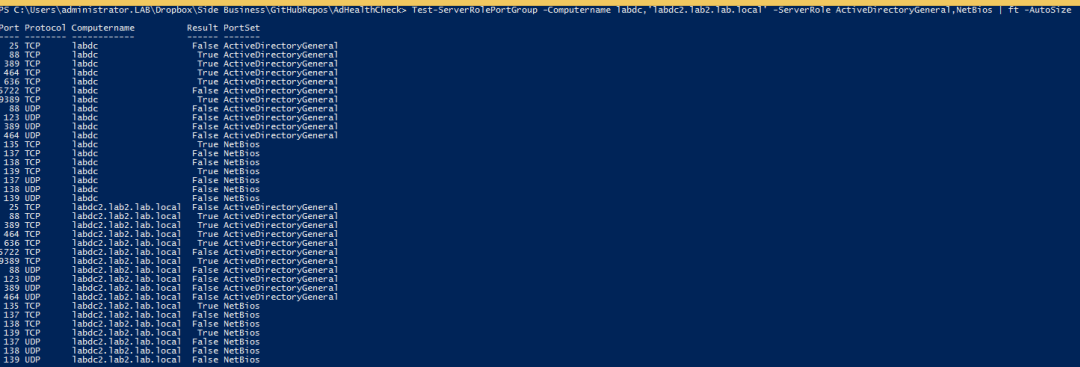讓我們深入了解如何建立一個 PowerShell 測試端口工具,這個工具可以讓您根據端口號和標籤來測試開放的端口。
要建立一個堅固的腳本,確保它不會在您的一半伺服器上出現故障,首先確保您的終極目標需要的前提條件已經滿足是很重要的。
這些前提條件是什麼?前提條件包括像 FTP、HTTP、DCOM、WMI、WSMAN 等服務。您嘗試連接到伺服器的連接通常依賴於這些服務。
在嘗試建立連接之前,您可以對伺服器執行幾個層次的檢查,具體取決於您希望進行多嚴格的檢查。
首先,您需要在網路端遍歷整個 OSI 協定棧。這還不包括您從中執行腳本的主機系統上的服務以及遠端主機系統上的其他所有東西。
在查詢遠端伺服器時,您需要執行的第一個測試之一是檢查適當的網路端口是否已打開並可訪問。取決於遠端伺服器上運行的服務,您需要查詢的端口也會不同。
I always used to either not even attempting to test port connections or fumbling around with finding that latest Test-Port script I had scavenged somewhere. Once I found it to figure out what ports I actually needed to a test ahead of time. Today was the final straw.
I needed to query a set of domain controllers before running some CIM queries against them. I went about my normal fumbling around and decided enough was enough and sat down and built my own, fully featured port testing script.
有了這個 Technet 腳本的幫助,我成功地創建了一對非常好用的 PowerShell 函數,它不僅可以讓您測試開放的 TCP 和 UDP 端口,還可以根據伺服器角色測試端口組。不再需要每次都 Google 服務使用的端口了!
當然,尤其是對於Active Directory,端口可能因服務器操作系統、域控制器上的各種服務等而有所不同。根據您的環境需要進行調整。
這裡是一個使用示例的屏幕截圖:

您可以看到,您可以指定任意多的服務器,它將輸出一個漂亮的對象列表,按服務端口組和每台計算機的端口進行分類。到目前為止,它非常有用!希望您也像我一樣能從中受益!













